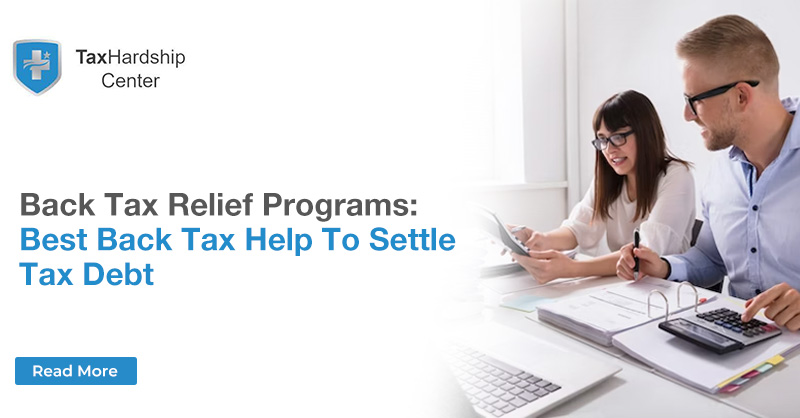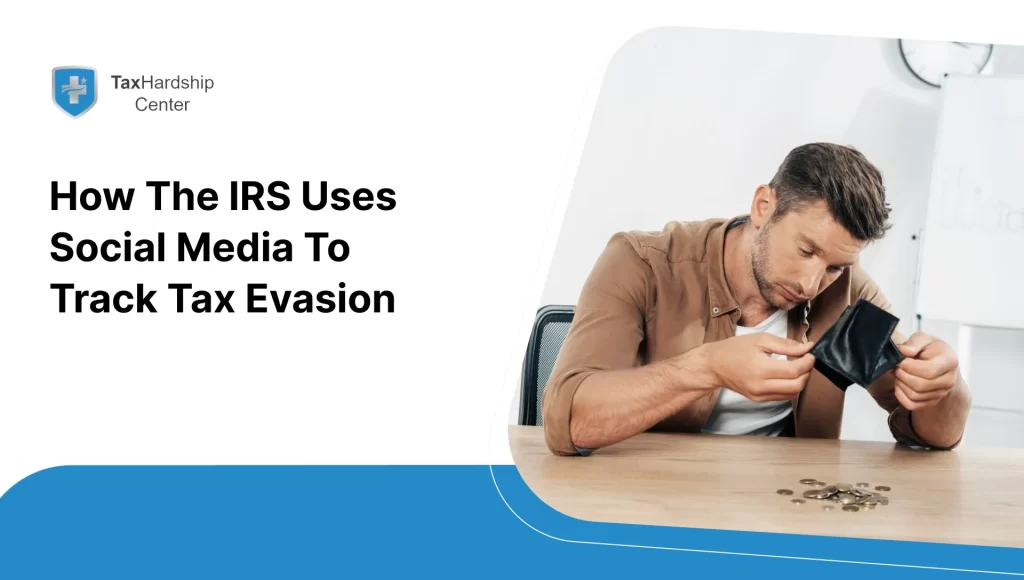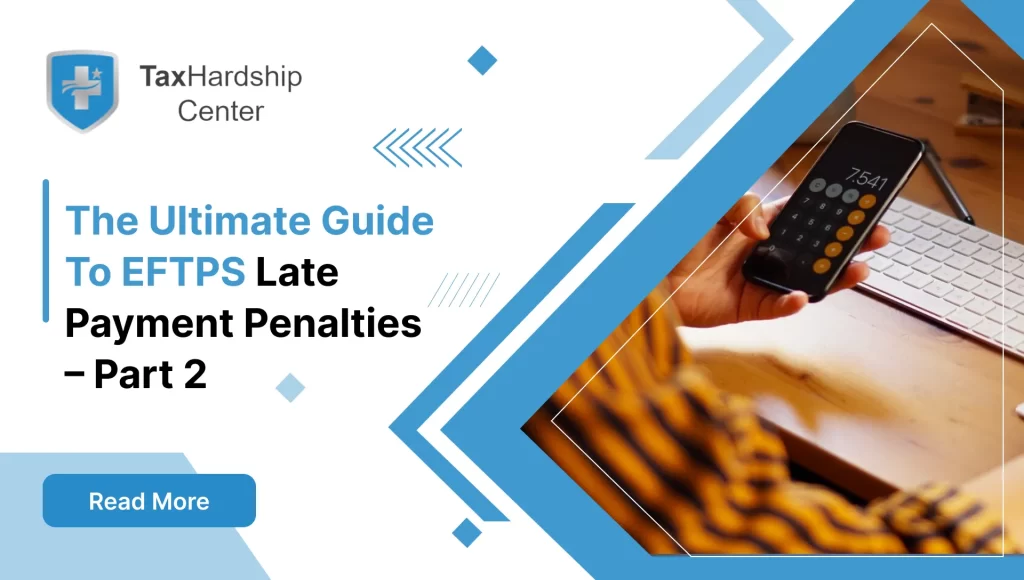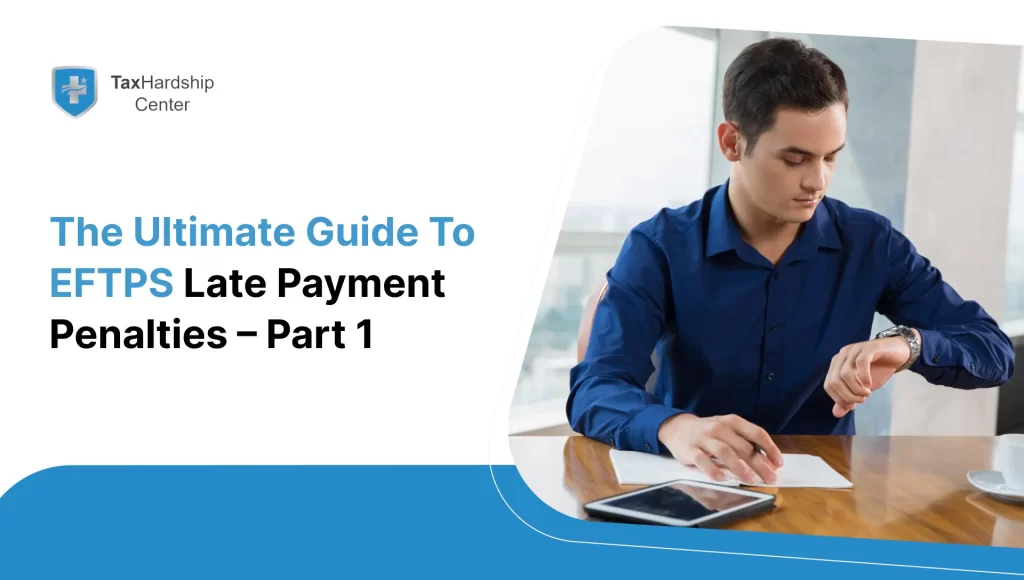Dealing with tax requirements can be overwhelming for most individuals as it incorporates various scenarios that can be difficult to understand. This is why people prefer collaborating with experts specializing in this field. Seeking professional help lets you get the best back tax help and identify relevant strategies to mitigate tax debt issues.
Buried in Back Taxes? Breathe Easy with THC’s Expert Guidance.
Need help navigating tax debt? At Tax Hardship Center (THC), we provide free consultations & expert reviews to help you understand your options. Our seasoned professionals will explore your unique situation, offering clear explanations & tailored solutions to ease your stress.
Why Choose THC?
- Hassle-Free Help: Simplify complexity with our dedicated team guiding you at every step.
- Peace of Mind Guaranteed: Feel confident with our 14-day money-back guarantee.
- Expert Solutions: Get a free consultation & personalized insights from tax pros.
- Nationwide Support: We serve all 50 states, so location is no barrier.
Ready to take control? Schedule your complimentary back tax consultation today and let THC pave your path to tax debt relief.
What are Back Taxes?
Think of back taxes as unpaid bills to the government for your income. They accumulate when you:
- Underpay: This often happens when you don’t withhold enough taxes from your paycheck or neglect estimated payments for self-employment.
- Miscalculations: Mistakes happen, but in the world of taxes, they can lead to underreporting income or claiming incorrect deductions.
- Sudden Gains: Selling investments like stocks, real estate, or cryptocurrency can generate hefty profits, unexpectedly bumping you into a higher tax bracket and leaving you with unanticipated dues.
The longer you wait to settle these dues, the worse they become. Interest and penalties pile on, transforming a manageable debt into a mountain looming over your financial well-being.
Unraveling the Web of Tax Relief:
Tax relief isn’t magic, but it is a helping hand extended by the government. Think of it as a collection of tools designed to lighten your tax burden, categorized into two main types:
General Tax Relief:
This encompasses broader benefits like deductions, credits, and exclusions baked into the tax system. They aim to reduce your overall tax bill from the get-go.
Special Tax Relief:
Sometimes, life throws curveballs like natural disasters. The government might offer specific tax relief programs to ease the financial strain on affected individuals in these situations.
Navigating the Relief Maze:
Choosing the right tax relief program requires understanding your unique situation. There’s no one-size-fits-all solution.
The IRS offers several options for different circumstances and debt amounts. Here are three noteworthy ones:
- Payment Plans: Need breathing room? These plans allow you to stretch out your payments over time, managing the debt in manageable installment plans.
- Offer in Compromise (OIC): Struggling with significant hardship? The OIC might let you settle your debt for less than you owe, offering a fresh start if you qualify. Check OIC eligibility
- Innocent Spouse Relief: Were you unfairly caught in your spouse’s tax mistakes? This program could shield you from the burden of their debt.
Each program has its eligibility criteria, application process, and potential consequences. Thorough research and expert guidance can help you navigate the complexities and choose the optimal path toward resolving your back taxes.
Understanding Back Tax Relief Programs
The back tax relief programs are critical lifelines for those who still need to pay taxes. This involves learning a broad range of alternatives to ease the burden of back taxes. Most of these programs are made of different options like payment plans, offer in compromise, penalty compromise, and current non-collectible.
Every avenue addresses different scenarios and allows taxpayers to bargain for a settlement or payment scheme tailored to their financial abilities. Apart from that, understanding these programs implies assessing the eligibility criteria, legal consequences, and the procedural provisions of the application. Taxpayers could visit tax relief companies or initiate a process to settle their tax liabilities and reduce penalties through the IRS.
Eligibility Criteria for Back Tax Relief
- Tax Compliance: To qualify for most relief programs, taxpayers must file their taxes on time and abide by all applicable rules.
- Tax Liability Amount: The amount of past taxes due frequently determines eligibility. Programs may include cutoff points for the lowest or maximum amount of tax debt required to be eligible for a given type of relief.
- Financial Hardship: If paying the entire tax burden would result in excessive financial hardship, many relief programs take that into account.
- Proved Inability to Pay: To qualify for some relief, one may need proof of a genuine financial hardship that prevents them from paying the entire tax bill.
- Statute of Limitations: There is a time restriction within which the IRS can collect taxes. The eligibility for several assistance programs may be affected if the statute of limitations for collecting has passed.
- Submission Deadlines: It is essential for eligibility to meet the filing dates and follow the precise timeframes provided by the IRS or state tax authorities.
- Payment History: Eligibility for some relief alternatives may be positively impacted by a history of timely payments, even if only partially.
- IRS Approval: Applicants must submit thorough financial information and accompanying documentation for approval from the IRS for one of the best back tax help.
- Kind of Taxes Owed: There may be variations in the qualifying conditions based on the type of taxes owed, such as payroll taxes, property taxes, or income taxes.
- Disability or Special Circumstances: Individuals with disabilities or those experiencing exceptional conditions, including natural disasters, may be eligible for specific relief schemes.
- Bankruptcy Status: Taxpayers going through bankruptcy may vary or only meet some of the requirements for some assistance programs.
- Appropriate Documents: To qualify for support, precise and thorough financial details and supporting documentation must be provided.
A taxpayer’s ability to receive back tax relief can be significantly affected by meeting these requirements, so it’s critical to evaluate eligibility based on unique circumstances and investigate the most appropriate relief choices. Getting advice from professionals might offer specific insights into eligibility and the application process.
Navigating the Labyrinth of Back Tax Relief: A Deeper Dive into Program Comparisons
As you stand at the threshold of back tax relief options, choosing the right path requires a discerning eye. Like a winding path in a labyrinth, each program leads towards a potential resolution but has distinct terrain and challenges. Let’s explore a deeper dive into these programs, comparing them head-to-head across critical factors to guide you toward the most fitting exit:
Financial Hardship:
- IRS Payment Plans: Ideal for manageable debts where you can demonstrate the ability to cover monthly payments with income and expenses. Think of it as a gentle slope, manageable with steady steps.
- Offer in Compromise (OIC): This path tackles steep mountains of debt exceeding $10,000 but demands proof of severe financial hardship, like living paycheck to paycheck. Only for those on the brink.
- Innocent Spouse Relief: When you’re unfairly caught in the avalanche of your spouse’s tax mistakes, this program offers a rescue rope, requiring documented innocence and financial impact.
Debt Amount:
- IRS Payment Plans: The Swiss Army Knife is adaptable to minor or more enormous debts, offering repayment flexibility like shorter sprints for smaller burdens or long endurance treks for significant ones.
- OIC: This path shines brightest for substantial debts, where settling for less becomes a beacon of hope. Think of it as scaling a towering obstacle to reach a rewarding vista.
- Innocent Spouse Relief: The focus shifts to the burden unfairly imposed by your spouse’s actions, regardless of the overall debt amount. It’s about navigating a treacherous aperture, not the size of the mountain.
Timeline:
- IRS Payment Plans: Like a brisk walk, you can traverse this path relatively quickly, potentially resolving smaller debts within months. For more enormous burdens, the journey might take years.
- OIC: Prepare for a long, winding expedition. The application process can take 6-9 months, and approval might stretch the journey further. Think of it as climbing Everest – patience and resilience are essential.
- Innocent Spouse Relief: The timeline depends on the complexity of your situation. Some cases might be swift, while others require meticulously navigating tangled legal terrain, taking considerably longer.
Impact on Credit Score:
- IRS Payment Plans: Tread carefully, as some late payments or defaults can leave minor scars on your credit score. Think of it as navigating a bumpy path that might require extra caution to avoid getting scraped.
- OIC: This path might temporarily dip your credit score while settling your debt. See it as crossing a shaky bridge – there might be a wobble, but you’ll reach the other side eventually.
- Innocent Spouse Relief: Ideally, this program carves a smooth path without significant credit score damage. You’re the innocent bystander, not the one traversing risky terrain.
Additional Considerations:
- Eligibility: IRS Payment Plans have the broadest open door, while OIC and Innocent Spouse Relief require stricter criteria and substantial documentation to enter.
- Complexity: IRS Payment Plans tend to be straightforward, while OIC and Innocent Spouse Relief might involve legal intricacies and require professional guidance.
- Cost: OIC and private companies might involve upfront fees, whereas IRS Payment Plans typically have setup and direct debit charges.
Remember, choosing the right path requires a holistic view. Analyze your financial situation, debt amount, timeline constraints, and risk tolerance. Seeking professional guidance can illuminate the best route through the labyrinth, leading you toward a future free from the burden of back taxes.
Conclusion
Understanding the nuances and choosing the right path is crucial for financial recovery in the intricate web of back tax relief programs. From navigating manageable debts with IRS Payment Plans to scaling substantial obstacles with Offer in Compromise and finding relief from a spouse’s tax mistakes through Innocent Spouse Relief, each program offers a unique journey.
Seeking Clarity on Your Tax Debt Relief Options?
At Tax Hardship Center, we understand the stress and uncertainty of tax debt. Our seasoned tax professionals are prepared to dive deep into your unique situation, offering a comprehensive expert review of your tax problems at no cost. If you need help deciding what steps to take next, our free consultation can shed light on potential solutions you may have overlooked.
Why Choose Tax Hardship Center?
- Hassle-Free Assistance:
Bid farewell to sleepless nights and tax-related stress. The Tax Hardship Center simplifies the complex. Our expert team dedicates itself to guiding you through each step, addressing your tax concerns with precision and care.
- 14-Day Money Back Guarantee:
We’re so confident in alleviating your tax worries that we offer a 14-day money-back guarantee. If, for any reason, you’re dissatisfied, we’ll promptly refund your investment. Your peace of mind is our paramount concern!
- Free Consultation:
Are you eager to witness the transformation of your tax experience? Book a free consultation now! Our team will evaluate your situation, answer queries, and provide tailored insights at zero cost.
- Nationwide Coverage:
Regardless of your location within the United States, the Tax Hardship Center has you covered. Serving all 50 states, our commitment to excellence transcends geographical boundaries. Wherever you reside, count on us to deliver expertise to your doorstep.
Ready to reclaim control over your financial life? Contact us today for your free consultation and let our experts help you chart a course toward tax debt relief.
In conclusion, while tax debt can be overwhelming, several less-known relief options might provide a lifeline. With careful consideration and professional guidance, you can make informed decisions that alleviate the burden of tax debt, allowing you to regain financial stability and peace of mind.
Frequently Asked Questions:
Q: What are back taxes, and how do they accumulate?
A: Back taxes are unpaid bills to the government for income, accumulating through underpayment, miscalculations, or sudden gains. The longer they go unpaid, the more they accumulate with interest and penalties.
Q: What is the purpose of tax relief programs?
A: Tax relief programs aim to ease the burden of tax debt by offering various tools and strategies. They can include general benefits like deductions and credits or special programs for specific circumstances, such as financial hardships or natural disasters.
Q: What are the critical back tax relief programs the IRS offers?
A: The IRS provides options such as Payment Plans for manageable debts, Offer in Compromise for significant hardship, and Innocent Spouse Relief for those unfairly burdened by a spouse’s tax mistakes.
Q: How do I know which back tax relief program is right for me?
A: Choosing the right program depends on your unique situation. Factors like the amount of debt, financial hardship, and eligibility criteria play a crucial role. Seeking professional guidance can help you navigate the complexities and make an informed decision.
Q: How do back tax relief programs impact credit scores?
A: The impact varies. Payment Plans may have minor effects, while Offer in Compromise might temporarily dip. Innocent Spouse Relief ideally avoids significant credit score damage.
Q: Are there alternatives to IRS back tax relief programs?
A: Yes, alternatives include negotiating payment plans directly with the IRS, leveraging assets, or exploring income-boosting strategies. Each comes with its own set of pros and cons.








